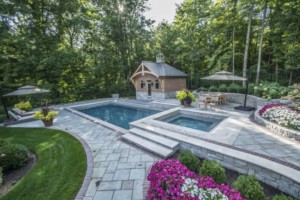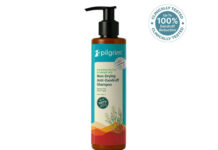 Landscaping around an outdoor swimming pool requires no-muss, no-fuss plant selections. The pool can be a flowery focal point, but don’t open it to litter from leaves and limbs.
Landscaping around an outdoor swimming pool requires no-muss, no-fuss plant selections. The pool can be a flowery focal point, but don’t open it to litter from leaves and limbs.
“Both in- and above-ground pools offer unique design challenges and opportunities,” said Tim Moloney, an instructor in landscape design at the University of Missouri. “In-ground pools offer the ability to provide screening with lower height plants” but may have more issues with litter falling into the pool.
“Above-ground pools are somewhat sheltered from ground debris, but are more of a challenge for visually softening the walls of the pool and (adding) privacy from outside viewers,” Moloney said.
Start by considering plant needs – sun or shade. Then decide what you want your poolside landscaping to achieve.
“Privacy screening versus sun exposure is typically the strongest pool-owner concern,” Moloney said. “This is followed closely by litter and tracking of grass clippings and mulch materials.
“After function is addressed, we focus on form,” he said. “Making the space as enjoyable as possible.”
Brightly colored flowers attract pollinators, and that could mean bee stings. Some of the most attractive ornamental plants have thorns. Both are obviously annoying to thinly clad and barefoot bathers.
“Typically, I have found that insects will generally ignore us if we ignore them,” Moloney said. “Just the mere presence of bees in the landscape does not initiate attack. However, if severe allergies or phobias of bees exist, I recommend concentrating on other ways to brighten up the landscape – brightly colored foliage, for example.”
Or turn to marigolds, chrysanthemums, mint, foxglove, geraniums and zinnias whose blooms don’t typically attract stinging insects.
And thorns?
“Cacti are very climate specific, but can offer huge aesthetic benefits for arid environments,” Moloney said. “Roses offer us what few other plants can – an entire summer of repeat blooms. In my opinion, the benefits of these plants outweigh the hazards as long as the plants are positioned an appropriate distance from well-trafficked areas.”
Some other poolside gardening do’s and don’ts:
• Watch where you stockpile organic materials such as pine straw or bark. “They can blow or be tracked into the pool by wet feet on pool decking,” Moloney said.
• Select plants for year-round interest, even in cold weather when the pool is closed. Think evergreens.
• Choose trees and shrubs that produce a minimum of litter. “Almost any organic material that falls from trees – needles, leaves, spent blooms, fruit – has the potential to stain hardscape elements like pool decks and patios,” Moloney said. “I simply try to balance the benefits with the concerns, and reach a compromise we can all live with.”
• Think about both day and night use. “Evenings can be accented by soft peripheral lighting or featuring tree trunks with up-lights,” said Robert Brzuszek, a landscape architecture professor with the Mississippi State University Extension Service.
• Eliminate the use of dark-colored pavement around the pool; it adds reflected heat to plants, especially in hotter, dryer climates. “Plants that have smaller or waxy leaves will also lose less water than large thin leaves which dry out quickly,” he said. AP







